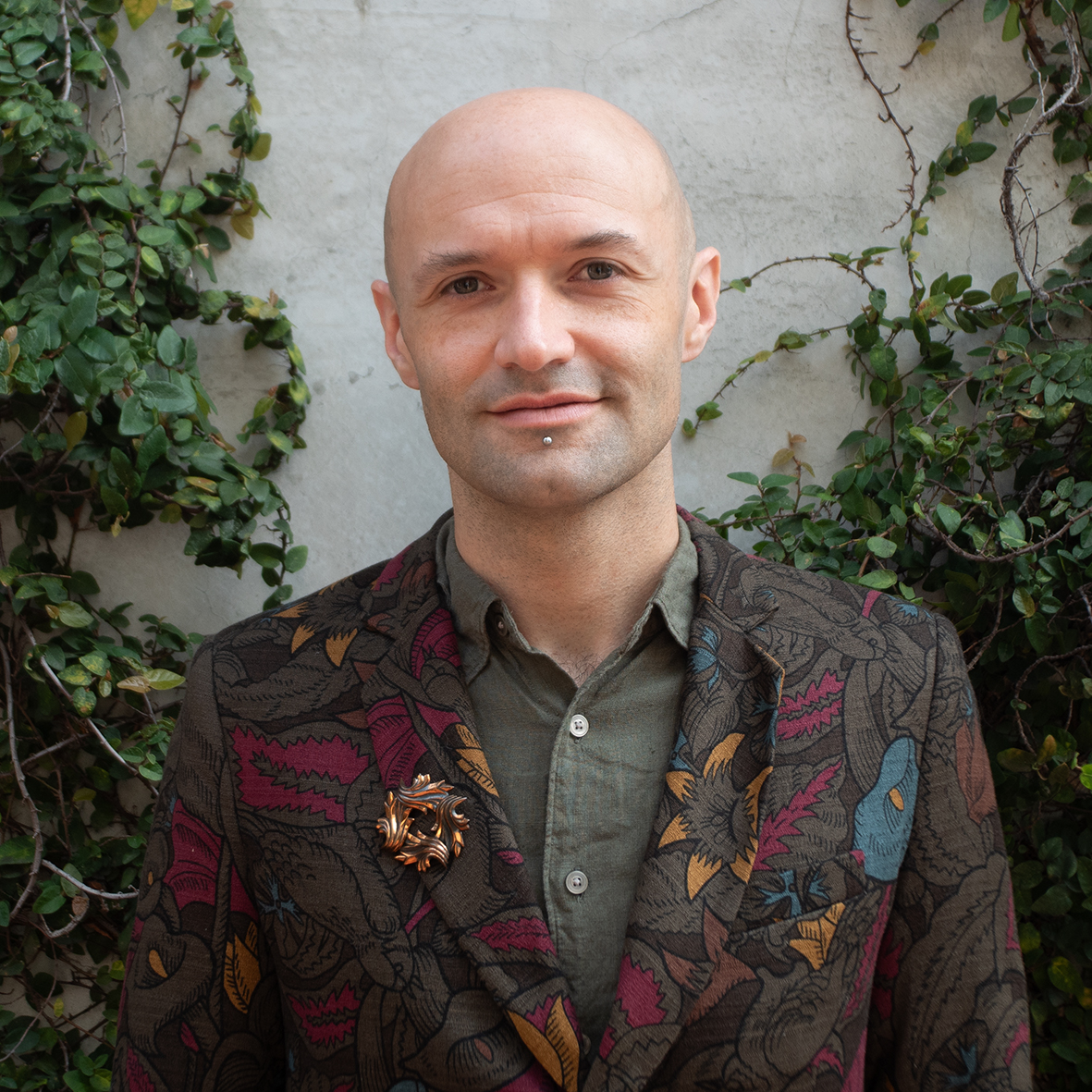“We wanted to make the barrier as low as we could": Sequential on designing the Fourm and continuing Dave Smith's legacy
With premium features and an entry-level price, Fourm is about to bring a whole new demographic into the Sequential family. We sit down with the company's CEO and Product Designer to find out more
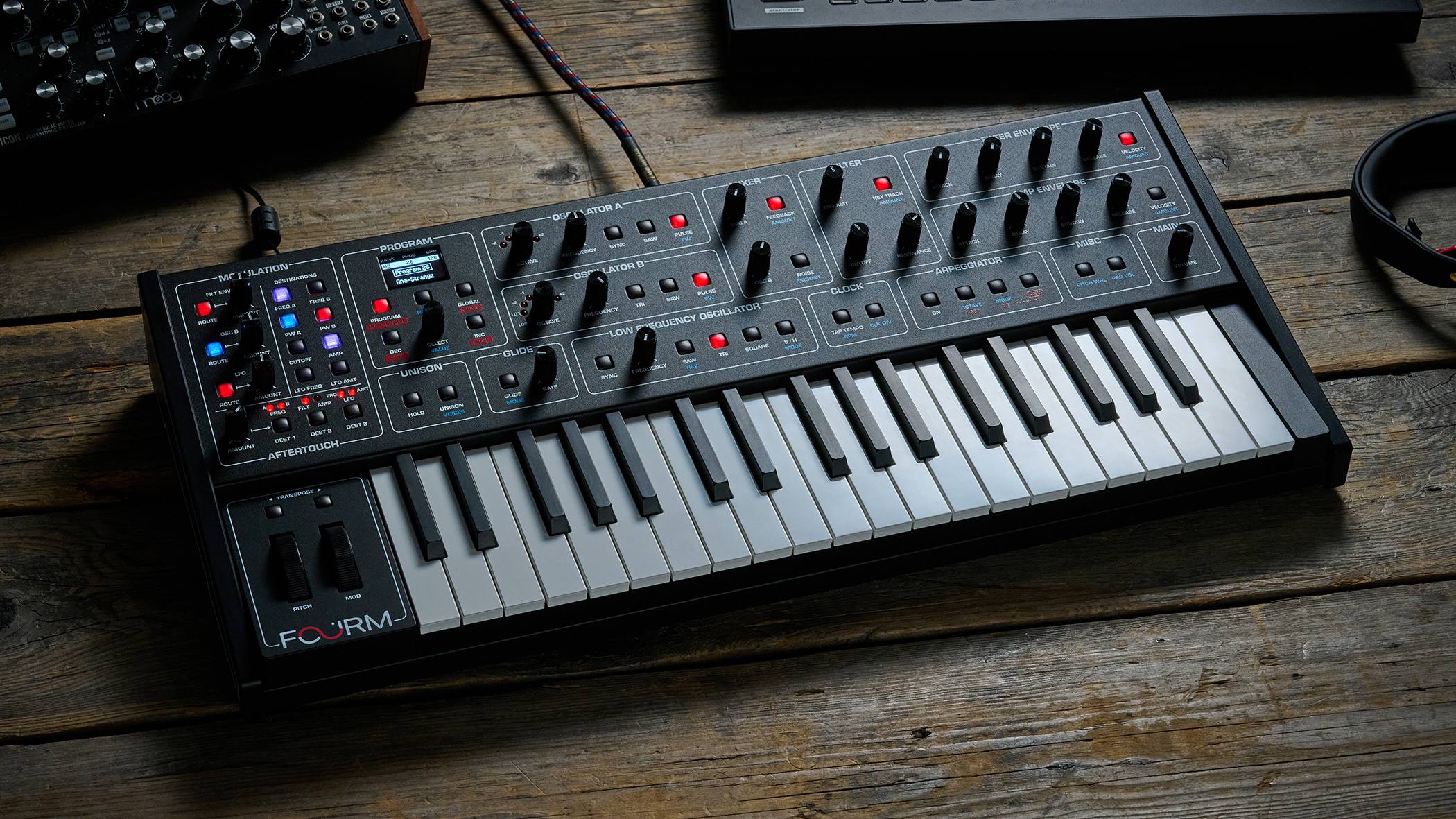
The announcement of a new Sequential synthesizer is always a big deal. The introduction of an all-analogue polyphonic powerhouse that retails for just $999 (£799) is something else entirely.
Since its founding as Sequential Circuits in 1974 the company’s output has been coveted by everyone from Peter Gabriel and Talking Heads to Nine Inch Nails and Radiohead. The attraction? Amazing sound quality, innovative features, and premium hardware – with pricing to match. In that context, the newly released Fourm steps out in a new direction, and extends a hand to a new audience.
“This product is in search of that customer who hasn't had the Sequential experience before,” declares Sequential CEO David Gibbons. “We wanted to make the barrier as low as we could.”
Why this new focus on accessible pricing, you might ask? “There's a lot of people who can't afford our instruments,” Product Designer Carson Day answers simply. “Things are getting more and more expensive for people and we want to really factor that into what we're making, to fill out our product line at all sorts of different price points and make things accessible.”
As you get your hands on this instrument it becomes obvious that accessibility has not come at the sacrifice of quality. Fourm – so titled for its four voices and small form factor – still boasts world-class sound, polyphonic aftertouch, an intuitive modulation system, and a tank-like build quality. It’s a wonder they managed to pull this thing together and stay on budget.
“We didn't want to just do something that was cheap for its own sake,” states Gibbons. “We wanted to figure out how to take the strengths of Sequential and the experience of an analogue poly and make it available to people who had previously figured Sequential was unobtainable.”
Affordability is all well and good, but to get a sense of Fourm’s real punching power, look no further than its flagship feature: polyphonic aftertouch.
Want all the hottest music and gear news, reviews, deals, features and more, direct to your inbox? Sign up here.
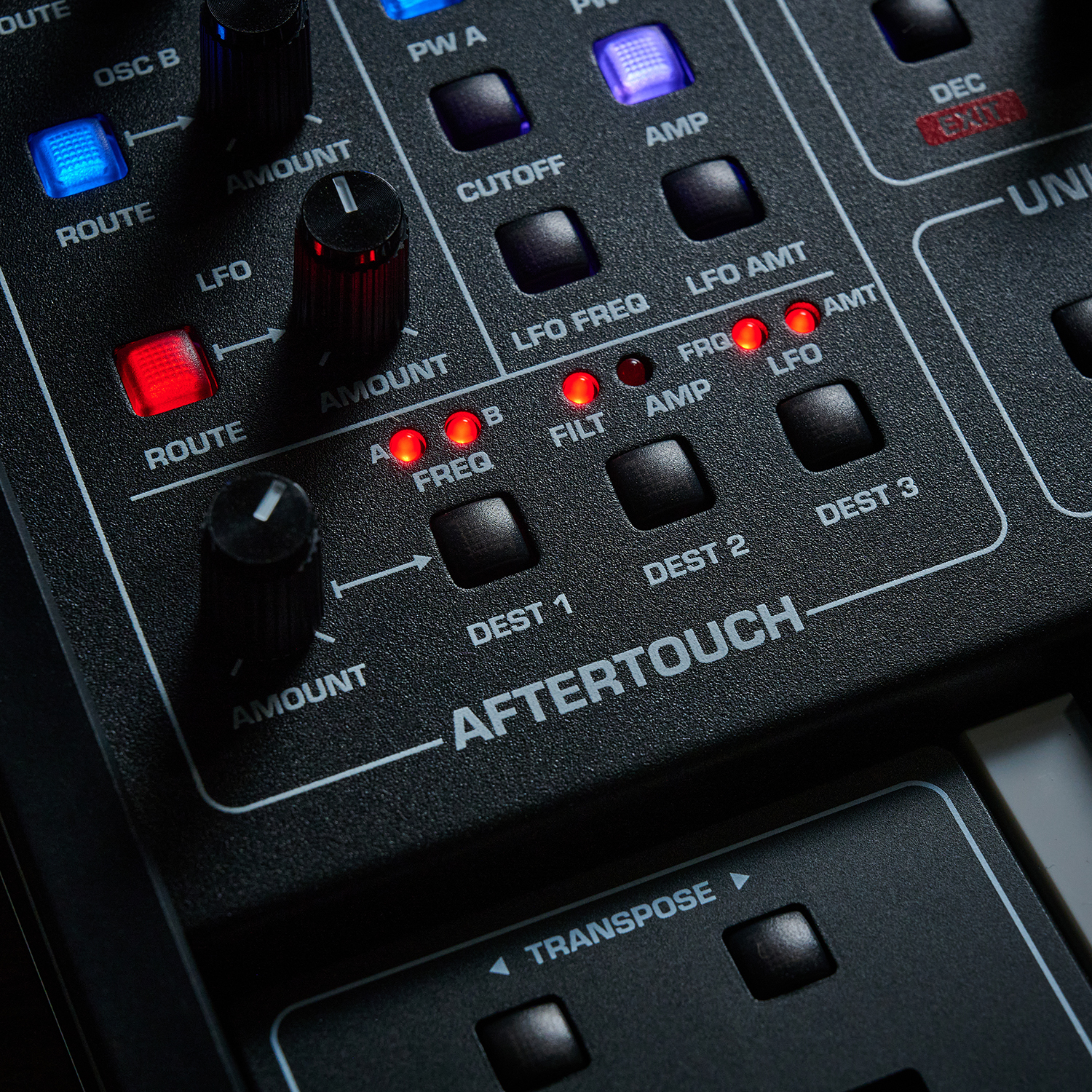
Ever given a keyboard a massage? Trust us, it sounds amazing. For those who’ve never tried poly aftertouch, it’s a simple premise: once you’ve played a note on a keyboard, keep your fingers in place and push down further. That pressure serves as a modulation source, same as a Mod-Wheel, which can be used to control filter cutoff, LFO rate and more.
On paper, that might not seem particularly exciting, but in practice it’s a surprisingly effective way to add nuance, depth and expressivity to a sound. On Fourm, not only is the polyphonic aftertouch exquisitely calibrated, it feels genuinely fun and musically rewarding to perform with – giving a fluid and tactile sense of play quite different from twiddling knobs. This is due in large part to the ‘start from scratch’ approach the team took when designing their now-trademarked Tactive keyboard.
“I don't think we started off by saying ‘we must make our own keyboard,’” recalls Gibbons. “But we began to realise the advantages of doing just that – from a cost perspective and also from the perspective of tying the design of the polyphonic aftertouch to the design of the voice and the personality of the synth.
“We started to throw all these ideas into a document and realised that there's a lot more that you can do with it than just pitch-bend or opening up the filter,” Gibbons continues. “I think it’s kind of surprising and delighting, and is maybe something that people who haven't had experience with polyphonic aftertouch will start to realise once they get their hands on it.”
It’s worth noting that this is not Sequential’s first outing with aftertouch. Way back in 1983 they released the T8. One of the finest synths of the decade, it boasted eight voices, multiple keyboard modes, one of the first implementations of MIDI, and, of course, polyphonic aftertouch.
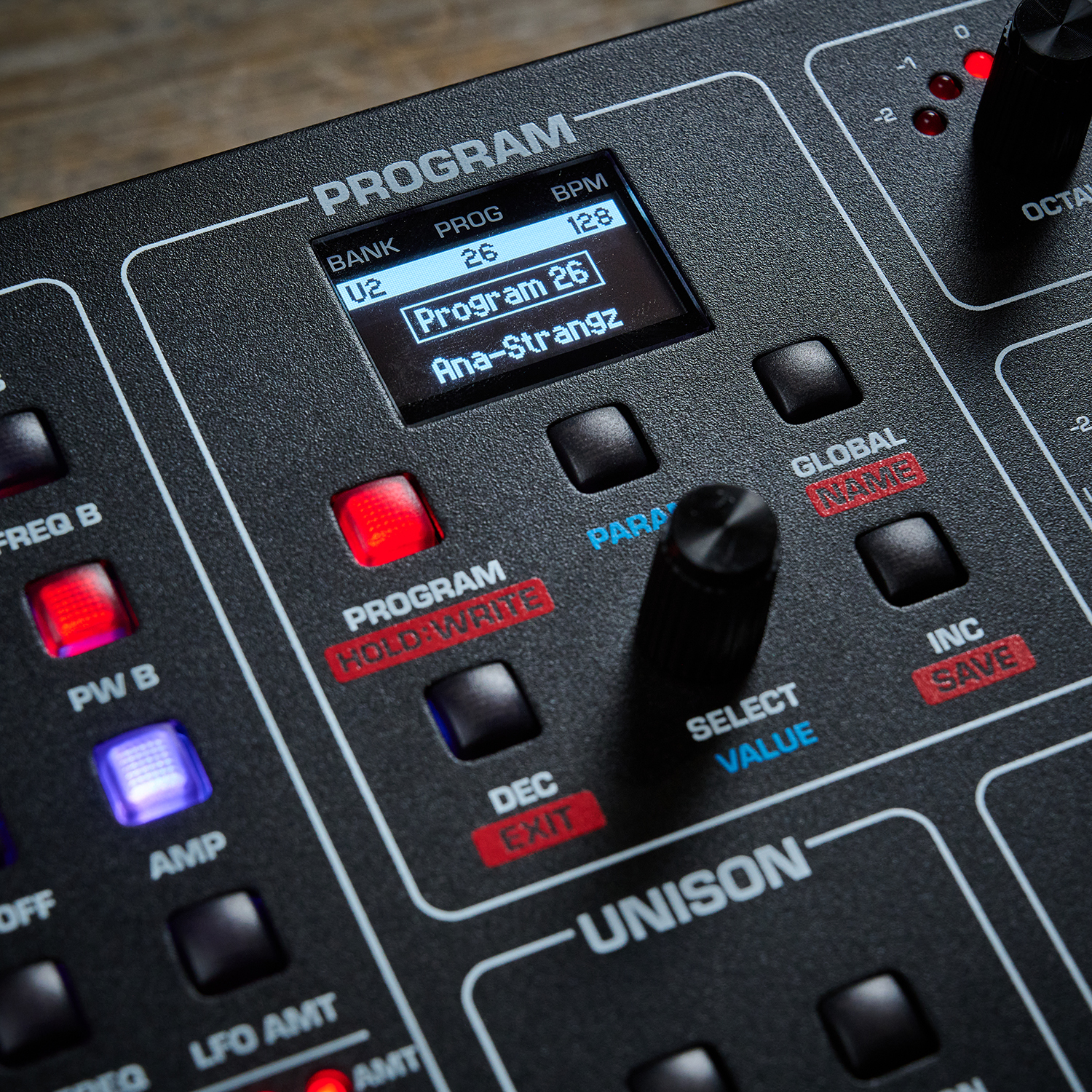
In retrospect, however, the T8 was one of those times when Sequential was perhaps too far ahead of the game. Aftertouch was prohibitively complex to implement at scale, and user demand for the feature wasn’t exactly overwhelming. “I think the whole company felt like, ‘wow, it was not worth going down that path,’” says Gibbons. “It was so much work; it was an entirely new key-sensing mechanism and it required per-key calibration in a very labor-intensive way.”
While synths with polyphonic aftertouch never went extinct, they’ve always been a relatively rare breed – until fairly recently. With the steady adoption of MIDI Polyphonic Expression (MPE), there has also been a renewed interest in polyphonic aftertouch. “Our other instruments that do not have polyphonic aftertouch have been gaining MPE through software updates,” Gibbons notes. “There just seems to be a building interest amongst the synth community. So we figured, all right, let's start down that path again.”
Decades later, the tech has finally gone mainstream, but one thing that hasn’t changed is the complexity of actually implementing it. “It's a big learning process developing something from scratch,” offers Day when asked about the challenges of designing Fourm’s custom keyboard.
He goes on to cite the impossibility of finding suitable off-the-shelf parts, the delicate balance between prototyping and cost over-runs, and the pedantic process of running the design through “a million cycles” of key presses to test its responsiveness, the hinges, the rubber contact points, and every element that could fail or degrade with long-term use.
“Perhaps enough time had passed that no one remembered how hard it was,” Gibbons jokes about Sequential’s return to the world of aftertouch. “It was such a lot of work, but we’re super proud of the results.”
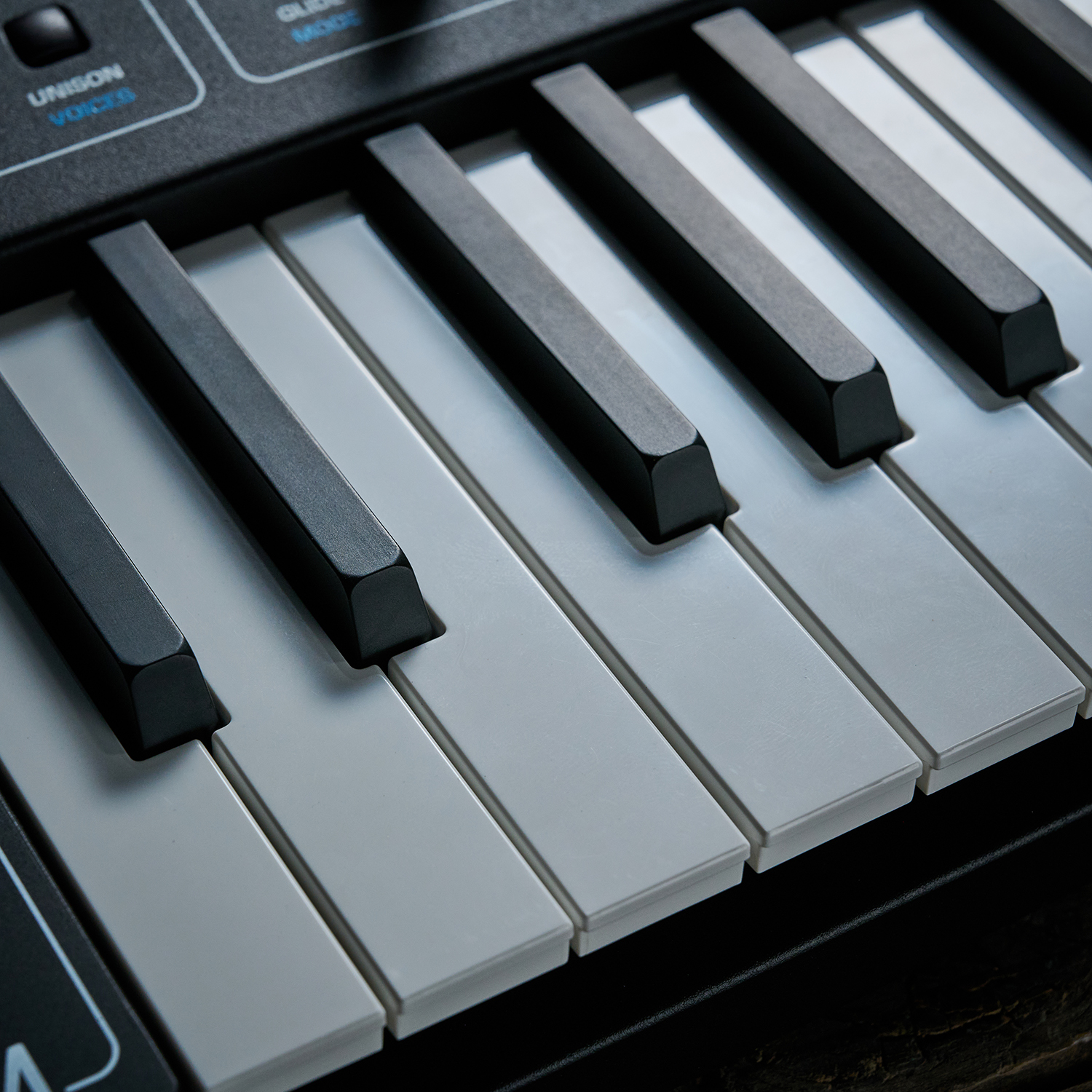
Given all the performance potential that aftertouch offers, the decision to opt for slim keys has hit a bum note with some users. On paper, smaller keys may not sound inviting to those with large hands or a well-honed keyboard technique – however, in Day’s opinion, the design choice hits the right balance of feel, build quality, and yes, price point. “It was really important to not make it feel toy-like,” he states. “And to have level of a control and a response that is of a higher quality than one might think initially when you hear ‘slim keys.’”
The keyboard might be the big attention-grabber, but it would be a mistake to think of this instrument as a one trick pony. It’s got significant sound design chops thanks to a simple but effective modulation matrix which sits along Fourm’s left-hand side. There’s a familiar selection of sources and destinations here to modulate, but the neat trick is how easy it is to set up and tweak routings.
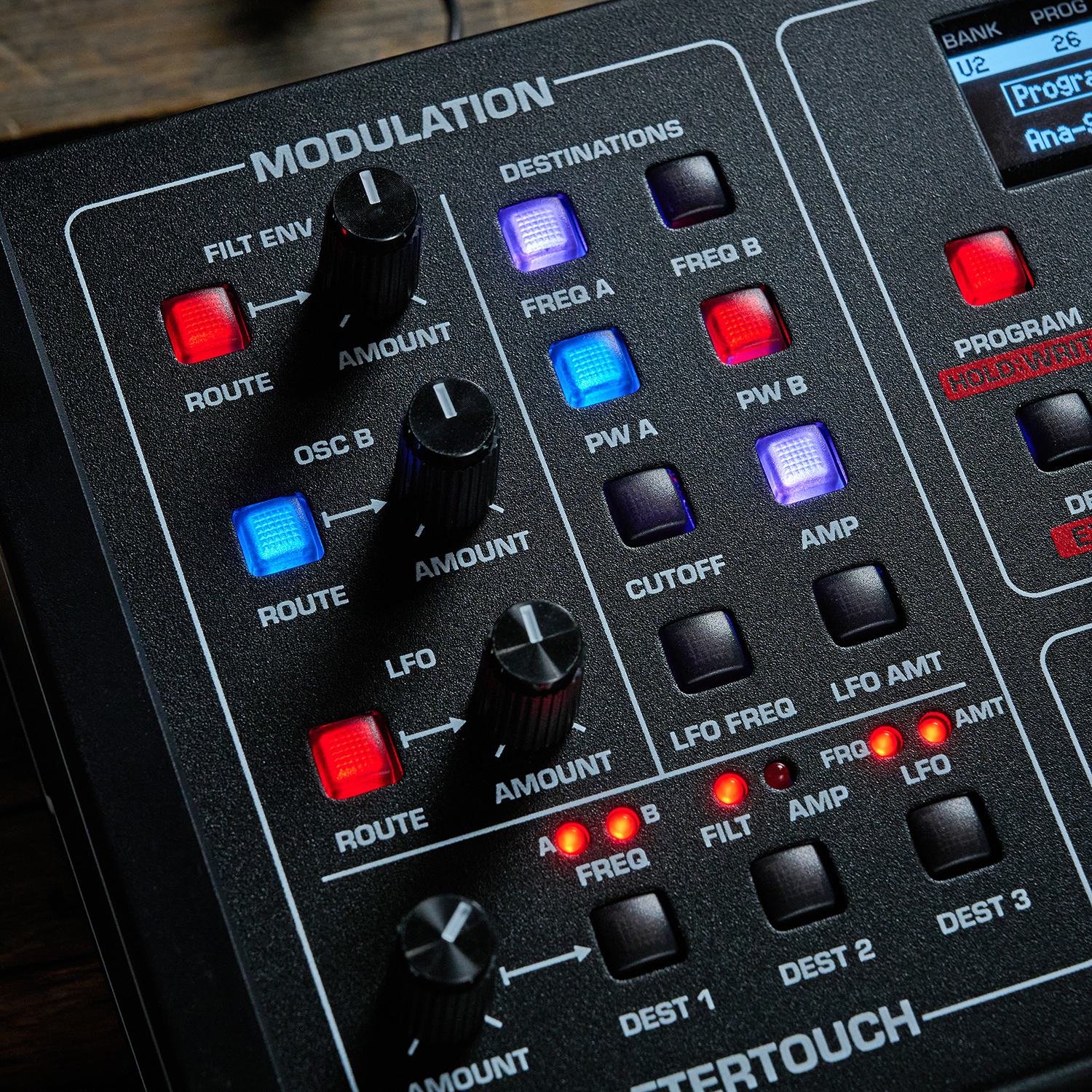
The matrix is directly inspired by the company’s Pro-One synth, which hit shelves all the way back in 1981, enhanced with a colour-coded traffic light system. A direct connection between source and destination is coloured red, modulation received from the Mod-Wheel is coded Blue, and if you want a destination to receive control data from both sources simultaneously, the button will turn purple. All of this is performed using repeated button presses to toggle through different routings.
“It's only two buses, but you can do a lot of different combinations within that mod matrix,” Day points out. “I've always wanted to do a Pro-One type reissue, and the conception of the synth started with this broad idea around certain components of a synth, including the mod matrix, and we worked to refine things so that, at a glance, you can understand what’s going on.”
We want to really minimise the time spent in the menu – to make things quick and intuitive
That “at a glance” ethos is evident across Fourm’s front panel which largely adopts a one-knob-per-function paradigm. “It's always been very important that what you have on the panel is what you really need,” states Day. “We want to really minimise the time spent in the menu, so having buttons and knobs for the most fundamental elements of creating or shaping sound, or having these secondary functions on the front panel when you hold a button to get directly to that parameter, those are ways to lighten the load and make things quick and intuitive.”
“I think that's really essential to the user experience,” adds Gibbons. “Especially with an analogue pol,y because you're expecting to make tweaks on the fly. So, we’re always thinking very seriously about ‘do I want this control to be on the panel? Is it important for performance? If yes, then am I cluttering the panel?”
In addition to a streamlined UI, we also get a new post-filter feedback module which does an admirable job of beefing up the sonics, and an understated but surprisingly powerful arpeggiator.
“Initially, we were going to have an arpeggiator but no sequencer,” recalls Day. “I thought ‘well, we actually could make a simple thing where you trigger the sequencer as if it were an arpeggiator.’” Simply hit the ‘record’ button within the arpeggiator module and you get 64-steps that can contain notes or chords. There’s also options to glide between individual steps, input rests, tie notes, and transpose your sequence to any key. Not too shabby.
It's analogue VCOs, analogue VCAs, analogue filters. The chips we're using sound fantastic
That’s not all: there’s also an additional mode that turns the sequencer into a modulation source. In this setting, each note on the keyboard represents a value from 0 to 127 and can be routed to any of the normal modulation destinations. “It's just another fun modulation source that you can do interesting things with,” says Day. “The notes you've entered into the sequence can be directed to multiple parameters in the synth – individual oscillators, the filter, or the amount of modulation being applied.”
Fourm has plenty of tricks up its sleeve, but one thing it does not have is onboard effects. That might frustrate some who are looking for an all-in-one solution for stage or studio, but it's easy enough to see why certain trade-offs were made. Packing the “Sequential experience” into a sub-$1000 instrument was always going to require some sacrifices, and the design team have wisely ignored secondary concerns to concentrate their efforts where it really counts: the core sound.
Fourm’s Prophet-derived oscillators and filter section are the beating heart of a 100% analogue architecture, producing the kind of tones and timbres that have kept fans coming back for over five decades.
“We could have had a bunch of wavefolders and all this other stuff in the signal path,” Day allows, perhaps referencing another affordable synth from an established brand released this year. “But it’s about the balance between the feature set and what your target is for the instrument – is it going to be a classic feel or is it going to be more forward-looking and become more-synthesis focused?”
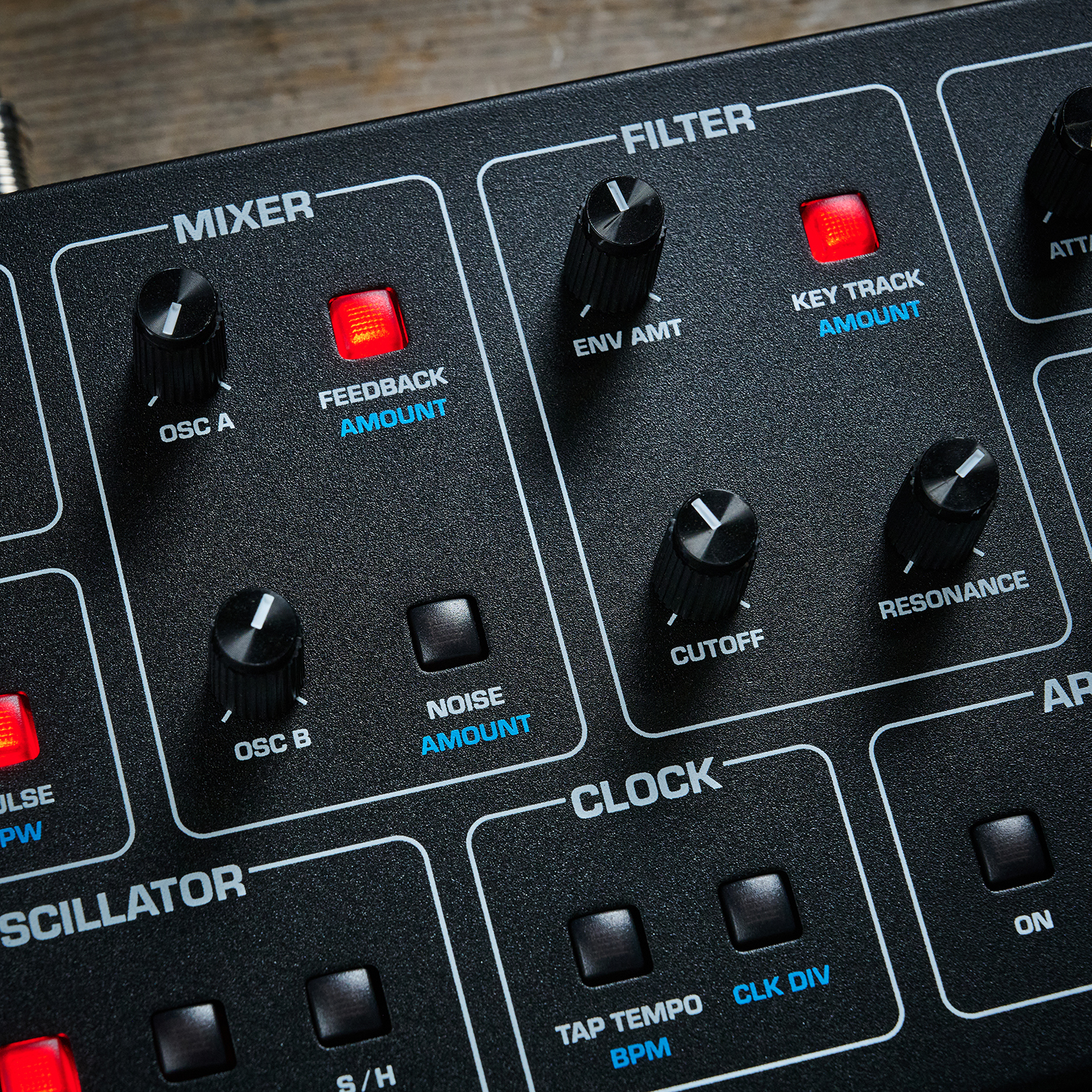
“The sonority of the voice is very classic,” Day says of the direction the team ultimately settled on with Fourm. “It's analogue VCOs, analogue VCAs, analogue filters. The chips we're using sound fantastic, and there's a lot of circuitry, gain staging, and tweaking between those modules to create a voice that is powerful, reminiscent of the Sequential sound, as well as having some character of its own.”
The sound is undeniably premium, and so is the tour-ready build quality. “Once you start making smaller synths,” Gibbons says. “You realise it's going to be appealing to people who are on the move. In the early stages we were assuming we’d have to give up on giving it a steel chassis, but our lead mechanical engineer really dug in with some of our vendors and figured out how to keep it.”
“It was really important to have something that was well-built,” affirms Day. “You can take this thing on the road and it's not going to break. Trying to do that affordably involves a lot of back and forth with a lot of different departments; mechanical engineering, hardware engineering, me in the design department. It's a big dance between all of these separate factors and ultimately, I think we came to a really great place.”
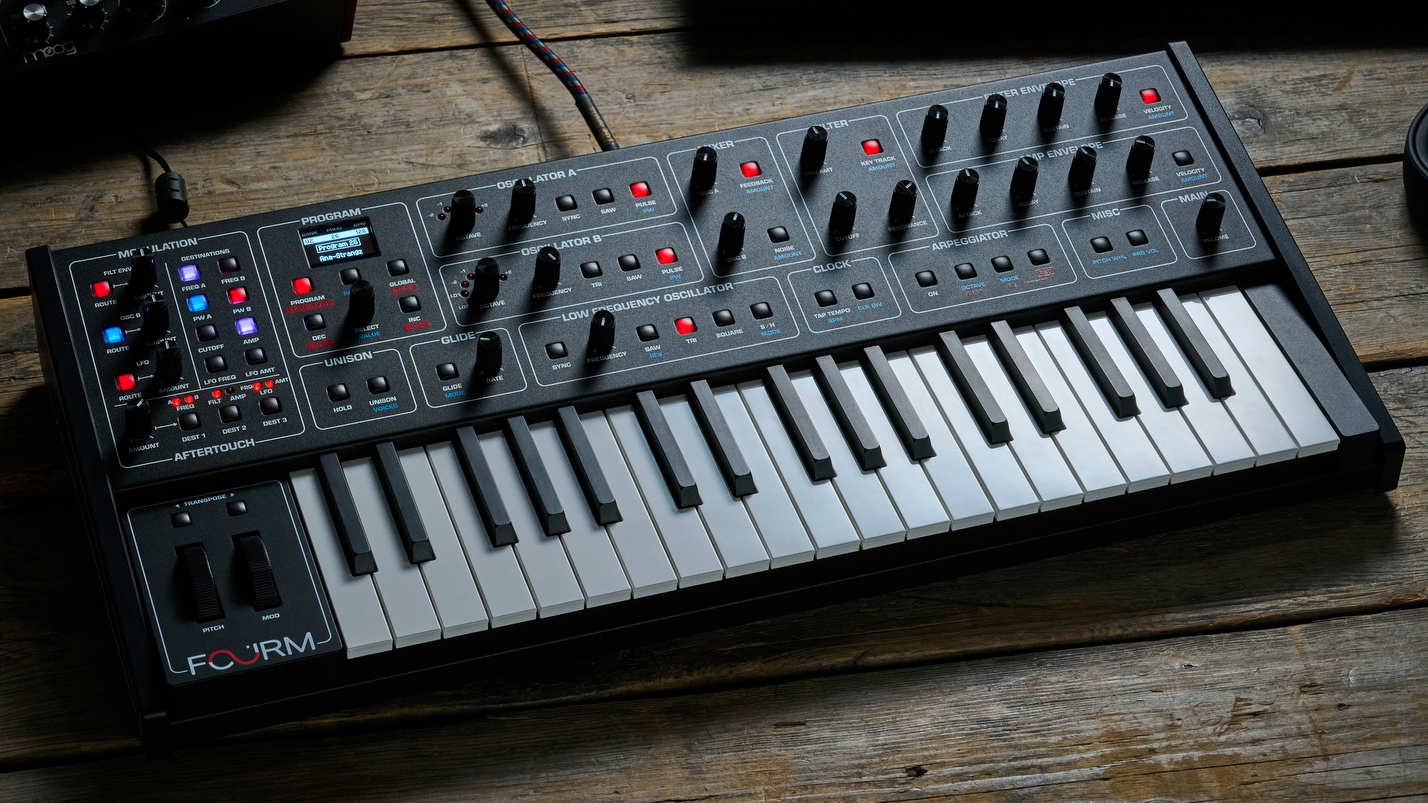
Part of what makes that balancing act possible is the company structure itself. Despite a number of recent changes – including the sale of the company to Focusrite in 2021 and the passing of their legendary founder, Dave Smith, in 2022 – it's still a tight-knit group at Sequential. “We're a small company,” Day emphasises. “Even with Focusrite owning us, we're still the same core team. When Dave was at the helm it was a very horizontally arranged company, the whole team worked together and you were really able to dabble in what you wanted.
“This isn’t the first product we've done since Dave’s passing,” Day continues. “We finished the Trigon-6 and the TEO-5 with the Oberheim team, but this was really the first brand new thing that we had done without him. It’s not the most complex or crazy synth, but it also felt like the team had really gotten a great idea and worked together on it in his absence.”
Day makes clear that Dave Smith’s influence is still felt throughout Sequential, and that, looking ahead, his design philosophy is something that they intend to preserve. “I think we're all pretty dedicated to continuing that legacy,” states Day. “It's pretty important to not mess with that underlying DNA which makes Sequential synths great.”
At the same time, novelty and innovation are integral to the brand. Remember, this is the company that gave us the first programmable polyphonic synth in the Prophet-5, the first MIDI capable instrument with the Prophet-600, and the first implementation of vector synthesis in the Prophet VS. Smith was instrumental in developing the very foundations of the MIDI communication protocol – an impact on music history that is difficult to overstate.
The goal, regardless of how many you sell, is to make something that sounds good, that's fun to play
“The boundaries are pretty wide,” agrees Gibbons. “If you look back at Sequential's history we’ve got current products like the Pro 3 that has wavetable oscillators built in, the Prophet 12 has got analogue with digital oscillators, the Prophet X is effectively streaming sample playback combined with analogue synthesis and analogue filtering. So I don't think it's constrained. There’s a wide palette to work from without violating anything we've done in the past.”
With Fourm now out in the world, both Gibbons and Day make clear that the company’s new interest in affordability doesn’t mean that they’ll be focusing only on cheaper products from now on. “I think accessibility is a good thing to do generally,” says Gibbons. “But it's not the only direction we're going in. We're constantly trying to figure out what higher-end things we could do, so I don't think we'll be only hitting the downmarket.”
Big or small, however, one thing that comes across in conversation with the Sequential team is the level of passion and focus they bring to each instrument. As Day puts it: “The goal, regardless of how many you sell, is to make something that sounds good, that's fun to play, something that’s not disposable, something that will last you a long time, and just to give more people the joy of playing a good, well-made instrument.”
Clovis McEvoy is a freelance writer, composer, and sound artist. He’s fascinated by emerging technology and its impact on music, art, and society. Clovis’ sound installations and works for virtual reality have been shown in 15 countries around the world.
You must confirm your public display name before commenting
Please logout and then login again, you will then be prompted to enter your display name.

